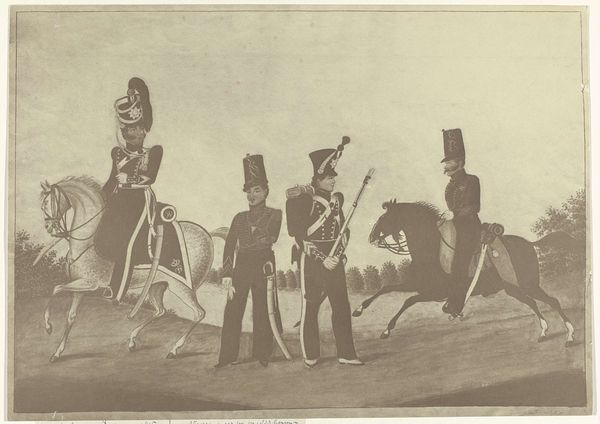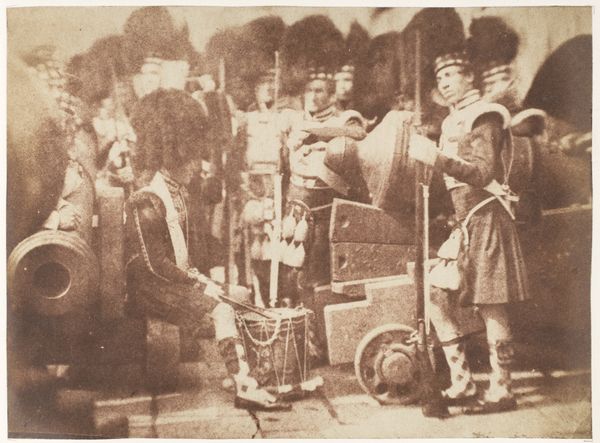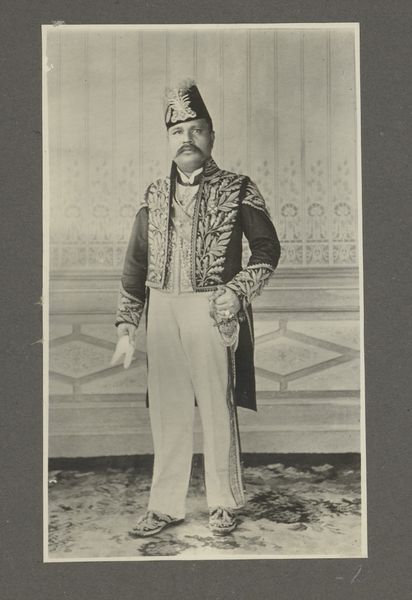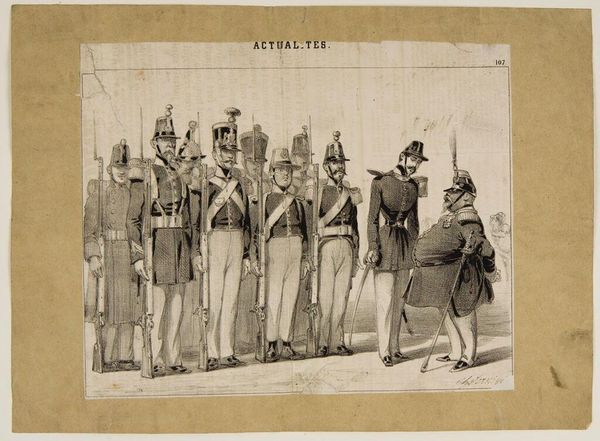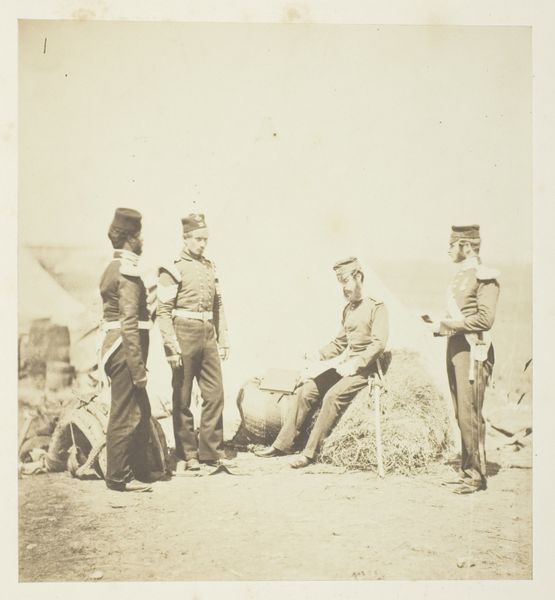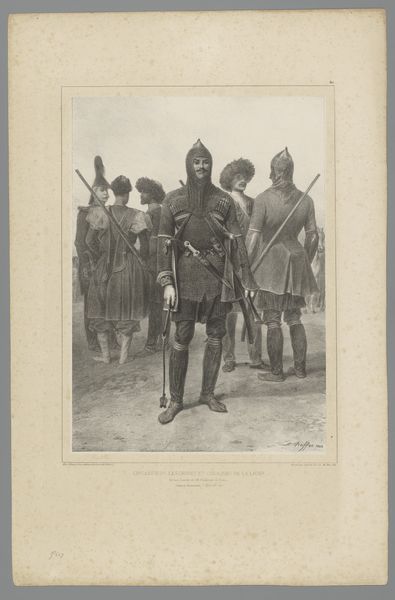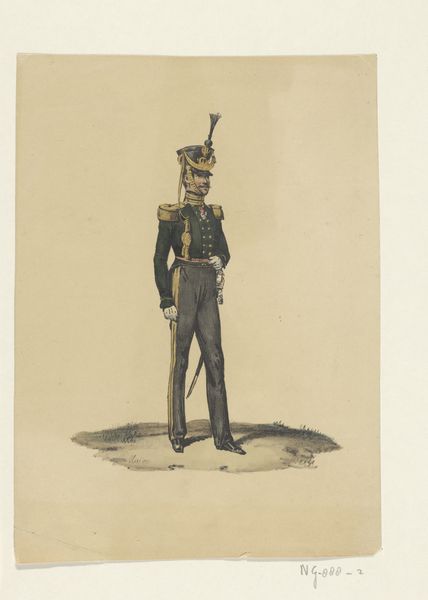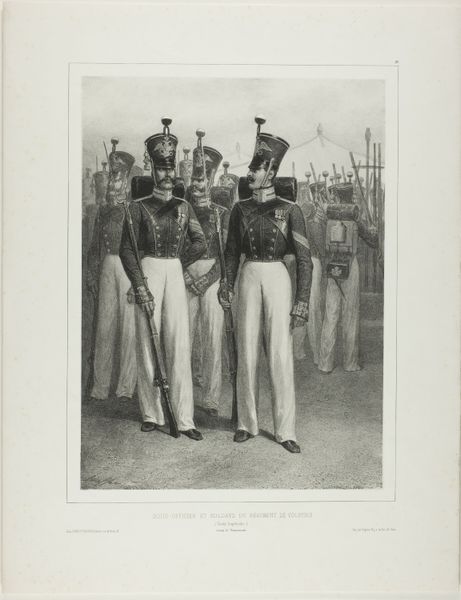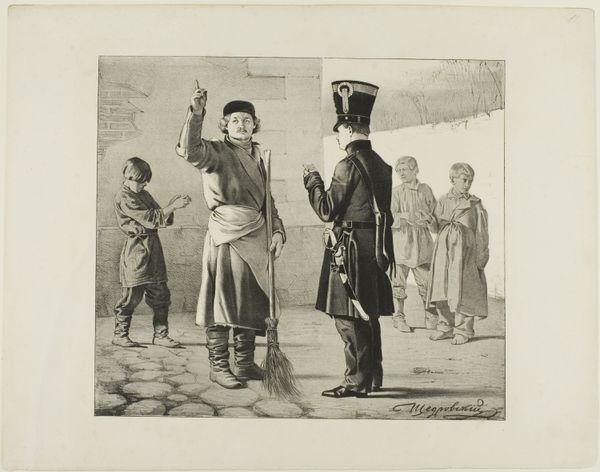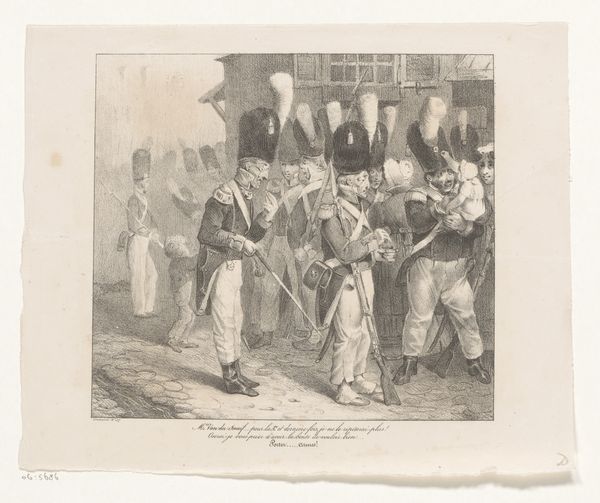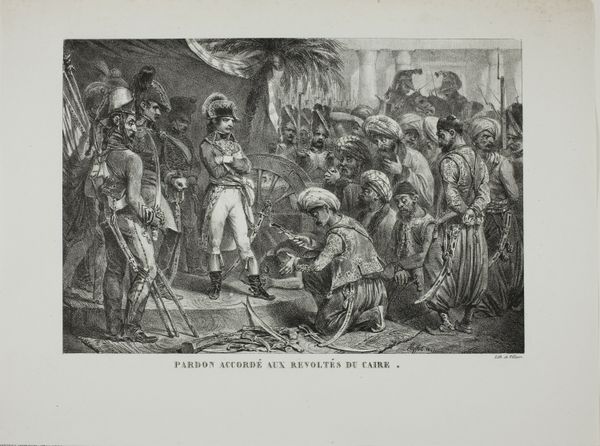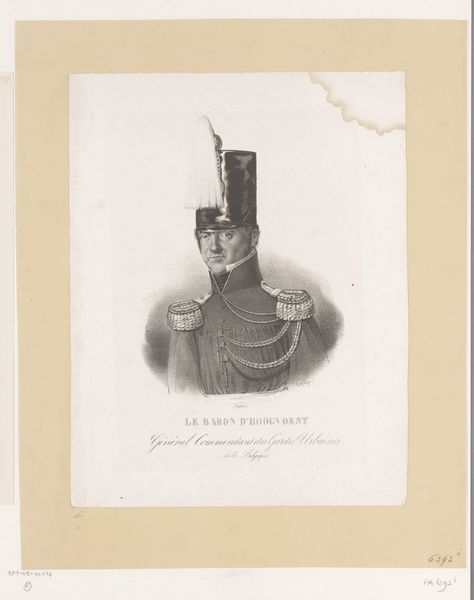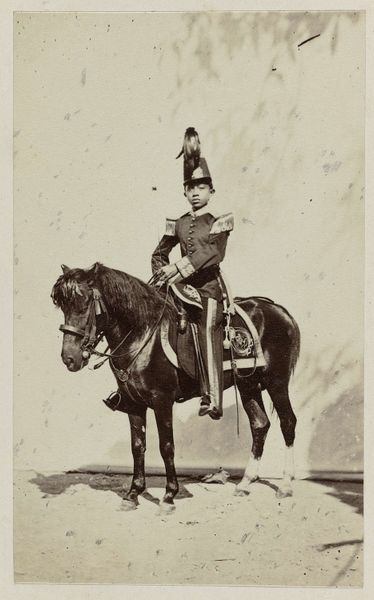![[A Persian revue in a painting that once belonged to Ardeshir Mirza, uncle of the king.] by Luigi Pesce](/_next/image?url=https%3A%2F%2Fd2w8kbdekdi1gv.cloudfront.net%2FeyJidWNrZXQiOiAiYXJ0ZXJhLWltYWdlcy1idWNrZXQiLCAia2V5IjogImFydHdvcmtzL2RhNjNjODMzLWMzM2YtNDBiMS1iMjQ0LTliZDUyMDBkYWNjZS9kYTYzYzgzMy1jMzNmLTQwYjEtYjI0NC05YmQ1MjAwZGFjY2VfZnVsbC5qcGciLCAiZWRpdHMiOiB7InJlc2l6ZSI6IHsid2lkdGgiOiAxOTIwLCAiaGVpZ2h0IjogMTkyMCwgImZpdCI6ICJpbnNpZGUifX19&w=3840&q=75)
[A Persian revue in a painting that once belonged to Ardeshir Mirza, uncle of the king.] 1840 - 1869
0:00
0:00
lithograph, print
#
portrait
#
lithograph
# print
#
orientalism
#
history-painting
Copyright: Public Domain
Editor: This lithograph, “[A Persian revue in a painting that once belonged to Ardeshir Mirza, uncle of the king.]”, was made sometime between 1840 and 1869. What immediately strikes me is the artist’s rendering of power, how the figures loom over a hazy, receding landscape populated with soldiers. I'm curious, what can you tell me about its historical context? Curator: That's a sharp observation. This print belongs to a broader artistic phenomenon known as Orientalism, hugely popular in Europe at the time. This wasn't merely a visual style; it reflected—and reinforced—Western ideas about the East. Ask yourself: What kind of political narrative do you think is being constructed through the scale and framing you noticed? Editor: It seems like it presents a very specific and likely Westernized image of Persian power. Were these types of depictions common? Curator: Absolutely. Consider the role of the print in circulating images. These Orientalist prints would have been widely distributed, shaping public opinion and influencing policy. So, how do you see the print fitting into the political and cultural landscape of 19th century Europe? Do you see any ways it challenges or reinforces prevailing notions? Editor: I suppose it largely reinforces them. By choosing to depict a "Persian review" – a scene of military might – the artist is catering to the European fascination with and perceived threat from the East. I'd say I have a new appreciation for how seemingly simple images are tied up with such complicated cultural and political issues. Curator: Precisely! By understanding the print’s original social and cultural environment, we unlock the political significance that early viewers likely ascribed to the lithograph. This is how we can begin to move beyond surface appearances.
Comments
No comments
Be the first to comment and join the conversation on the ultimate creative platform.
